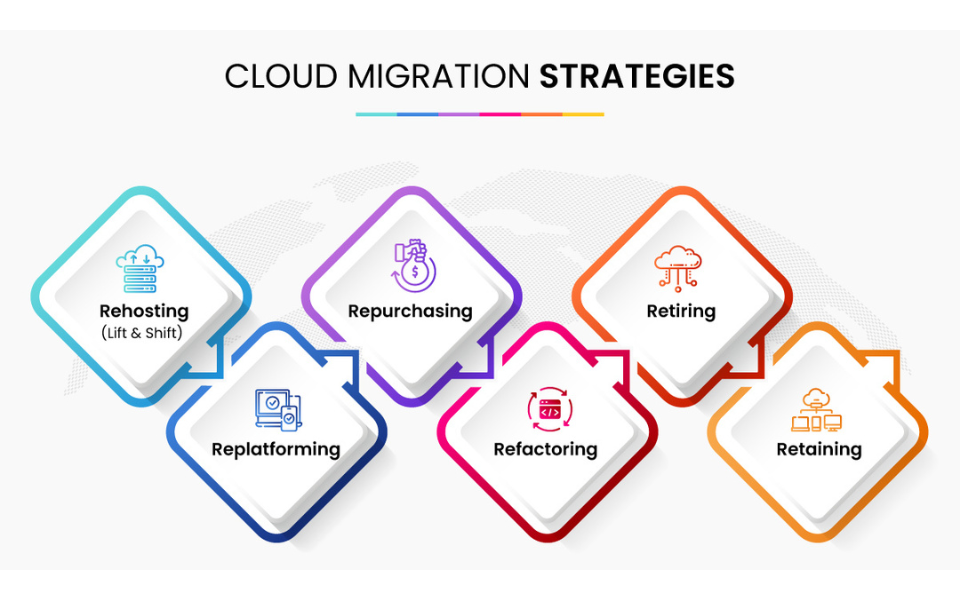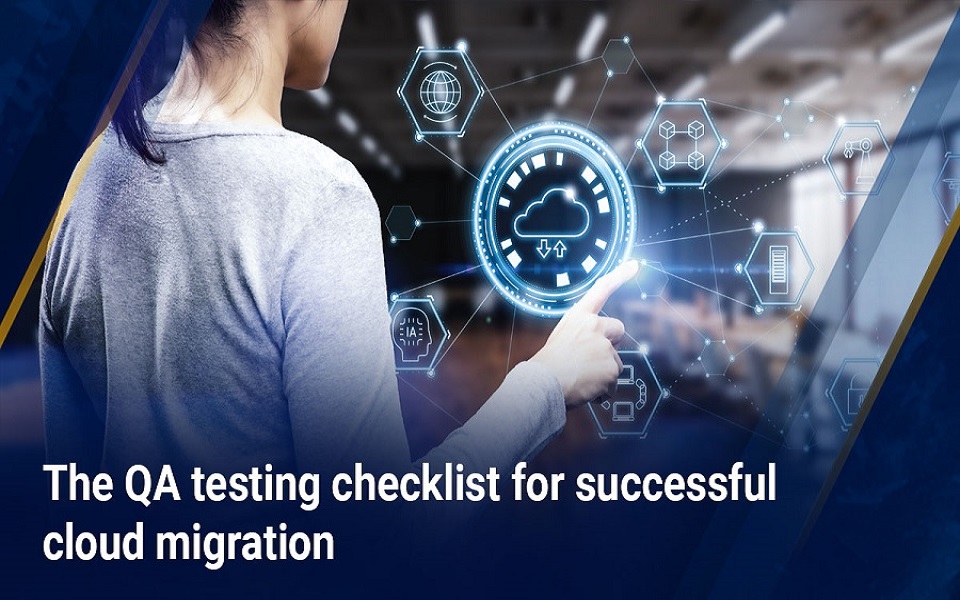Understanding Cloud Repatriation: The What and Why
In recent years, several global conglomerates have emerged as the top preferences for businesses entering the realm of cloud technology, and this trend is expected to endure, given the sustained high demand for cloud resources.
In line with this growth, Gartner's projections indicate that spending on public cloud services will reach a staggering $590 billion in 2023, suggesting a substantial surge in adoption.
In spite of the prevailing trend of embracing cloud technology, a study released by the 451 Research Group indicates a change in direction. According to this report, 48% of IT decision-makers are currently migrating their applications away from large-scale cloud providers in favor of alternative solutions. This shift arises from an increasing recognition of the constraints associated with exclusive reliance on public cloud infrastructure.
As a result, they are considering other options, such as "cloud repatriation," which means moving data, workloads, and applications from the cloud to on-premises or colocation facilities to achieve cloud success. With that in mind, this blog post will explore the idea of cloud repatriation, investigate the key motivations, challenges, and alternatives, and offer guidance to avoid backpedalling to on-premise solutions.
Cloud Repatriation: Insider Insights
Cloud repatriation is more than just a buzzword; it is a well-thought-out decision that involves moving applications from public cloud platforms back to on-premises or data centre infrastructure. This change reduces dependence on public cloud providers and provides a range of advantages for organizations.
According to a recent study called "Cloud Evolution: Cultivating Innovation" conducted by HCLTech, an intriguing insight into the future of cloud technology has been brought to light. The study predicts that over the next three years, approximately 24% of organizations intend to repatriate a portion of their data from the cloud and bring it back to on-premises data centres.
The Determinants of Cloud Repatriation
- High Costs
Although the public cloud offers low initial costs and flexible pricing, which are attractive, increasing complexity and usage can lead to unexpected and hidden fees. Rapidly accumulating costs associated with data transfer, storage, and network access can outweigh the advantages of cloud computing if not managed efficiently.
Cloud providers may have lengthy contracts or high fees for switching or discontinuing services. The public cloud can be expensive for businesses with extensive data or intricate workloads. Hence, companies may prefer to migrate to private or hybrid cloud environments for better expense oversight and management.
- Data Sovereignty
Several challenges and risks are associated with using the public cloud for financial and healthcare institutions that handle sensitive customer data as these institutions must comply with data sovereignty, residency, and regulatory requirements, meaning their data must be stored in specific locations or jurisdictions, making data security and compliance a top priority.
Although the public cloud offers numerous benefits, which include healthcare and finance-specific services, there may be legal and regulatory compliance concerns if it is unclear where the data is stored or processed.
Furthermore, questions regarding the security practices and measures of cloud providers may arise and, as a consequence, result in companies having to move their data to a private or hybrid cloud, which offers a more secure and compliant environment.
- Security
Security is a primary motivator for certain companies considering data repatriation. According to the "2023 CLOUD SECURITY STUDY, The Challenges of Data Security and Sovereignty in a Multicloud World," by Thales Group, between 2022 and 2023, about 39% of companies have faced cloud-based data breaches. The main reason for this is the "out of sight, out of mind" mentality. Storing data in the cloud can lead to the assumption that security concerns are no longer the owner's problem.
Although cloud providers have a certain level of security responsibility, it can be unclear where the provider's security duties end and the user's begin. Ultimately, the responsibility falls on the data owner to ensure that their cloud-stored data is protected by every possible safeguard.
Some situations leave no room for debate when security and compliance concerns are brought up. As a consequence, some data and applications are left and stored on-premises.
- Latency
Public cloud services often cannot achieve the speeds required for some workloads or data transfers. Financial services organizations, for instance, need to process millions of transactions per hour with a latency below 2 milliseconds and, on occasion, even sub-millisecond responses.
When transmitting data over long distances, latency can be a significant obstacle, even with high-quality equipment and optical fibre. For instance, if two sites are 500 miles apart, the round-trip time can exceed 12 milliseconds, and if the distance is doubled to 1,000 miles, the round-trip time can increase to over 21 milliseconds.
Challenges Of Cloud Repatriation
Bringing data in-house offers many advantages. However, retrieving data from the cloud can pose complex challenges that can hinder a smooth transition and affect the integrity, security, and compliance of the data. In this section, we will discuss some of the common challenges of bringing data back from the cloud.
- Infrastructure
Companies struggle with cloud repatriation due to infrastructure limitations for in-house data. To overcome this challenge, companies can use their existing hardware and software, which, as a result, can reduce the overall cost of cloud repatriation. Companies must invest in new hardware and software to comply with in-house data storage requirements, and create a scalability plan for data volume exceeding infrastructure capacity.
- Expertise
Bringing data in-house may require hiring more staff or working with outside firms to manage it. To proactively mitigate this challenge, companies can recruit new staff members who already possess the necessary expertise or offer training to existing employees.
Additionally, they can collaborate with external firms that specialize in areas where they may lack internal knowledge. However, it is crucial to ensure that new hires or outside firms have prior experience working with in-house data management and security protocols.
- Security
Security can be a major challenge, especially for small or medium-sized companies with limited resources. To mitigate the challenge, companies can implement security best practices like limiting access to data, backing up the data as per a defined schedule, and implementing strong authentication protocols. Companies should train staff in data security best practices and regularly conduct security audits to address vulnerabilities. Implementing security tools such as firewalls, intrusion detection systems, and data encryption can also enhance and safeguard in-house data.
Alternatives to Cloud Repatriation
Apart from cloud repatriation, other available alternatives can aid companies with their data management issues. Some of the most commonly opted-for alternatives include:
- Transitioning to an alternative public cloud provider
Numerous public cloud providers exist, each boasting unique strengths and weaknesses. Switching to a new provider could mean cost savings, enhanced features, or a closer alignment with the organization's requirements. Such a move has the potential to boost savings and performance.
- Adopting a hybrid cloud environment
A hybrid cloud environment blends public and private cloud resources, offering businesses the best of both worlds. It's an ideal choice for those seeking the advantages of both clouds, providing cost savings and the flexibility to tap into the public cloud as required.
- Adapting workloads for cloud integration
On occasion, applications can be modernized for enhanced efficiency and cost-effectiveness in the cloud. While this offers long-term cost savings, it's worth noting that the process can be intricate and time-intensive.
- Enhancing cloud utilization
Businesses can trim their cloud expenses through effective usage optimization, which includes workload consolidation, resource alignment, and leveraging cloud-based tools for cost management.
Avoiding On-Premise Reversals: Proactive Company Preparation
The ever-evolving business landscape has necessitated companies to embrace cloud-based solutions to maintain their competitiveness. However, there is always a risk of reverting to on-premise infrastructure after migrating to the cloud, which is detrimental to a company's growth and progress. To prevent such scenarios, companies should proactively prepare to ensure a seamless transition and avoid backpedalling to on-premise solutions. Here are some of the tips that businesses can follow to prepare themselves effectively:
- Comprehensive Cloud Strategy Development
To implement an effective approach, one should craft a cloud strategy prior to initiating the first workload deployment in the public cloud. Nevertheless, if a company has already established a playground or learning platform within the cloud, investing in a cloud strategy is still a viable option. Recognizing that the public cloud offers numerous advantages and functionalities that can augment operational efficiency and deliver value is of utmost importance. Yet, transitioning to the cloud should not be a mere migration for migration's sake. It is more prudent for organizations to perform a comprehensive self-evaluation and ponder, "How can the public cloud be harnessed to empower business endeavours?" This method ensures that moving to the cloud aligns with corporate objectives.
Firms must contemplate which existing systems and applications they are employing and whether they warrant migration to the cloud. Embracing a "cloud-first" strategy is not synonymous with mandating that all applications migrate to the cloud. Rather, it signifies that each new or existing application should undergo scrutiny for suitability in the cloud environment. Additionally, businesses ought to prioritize migrating applications to the cloud only when it is most practical and when it aligns with cost, effort, and technological capabilities. A robust cloud strategy necessitates periodic evaluation and adjustment to adhere to evolving business needs.
- Revamping of Architectural Structure
To fully leverage the benefits of the public cloud, it's important to choose the most suitable way to run your applications. While virtualization is still a viable option, it might not always be optimal. Transitioning to the public cloud presents an ideal opportunity to consider modern deployment methods. Containerization is a popular choice for both public cloud and companies developing cloud-native applications. Furthermore, the cloud also provides companies with a more straightforward means to execute containers using managed Kubernetes services, which enables them to focus on business requirements while outsourcing control plane maintenance to the cloud provider.
Alternatively, companies can leverage the benefits of the cloud by going serverless. While each cloud provider has its way of running serverless (or Function-as-a-Service), it provides an easy way to manage cloud-native applications and take advantage of the entire cloud provider ecosystem. By regularly reviewing the workload architecture, companies can confidently optimize and fully leverage the scale, elasticity, and rich service ecosystem provided by the public cloud.
- Effective Financial Management
One of the primary reasons companies consider the public cloud more expensive than managing their data centers is that they often don't see the bigger picture. When managing private data centres, companies must consider and take into account the cost of several factors, including physical security, power, cooling, and redundancy. On the other hand, in the public cloud, the provider is responsible for managing data centres, including the required personnel to operate them and the cost of using the computing network, storage, and software licenses. The price for consuming the cloud services includes all of the mentioned expenses, making it a much more convenient and inexpensive option.
Migrating workloads to the cloud can turn out to be an expensive ordeal. It can be even more costly if the pricing and financial management aspects are not thoroughly understood. Therefore, it is crucial to have a clear understanding of the pricing options offered by cloud providers, which include on-demand, reserved instances/saving plans, and spot instances. Companies should be aware of cost-saving options to avoid high expenses.
It's crucial to select the suitable pricing option for every workload, and trained employees, such as DevOps engineers, developers, or architects, must continuously monitor, review, and adjust the pricing options as necessary. Neglecting to monitor the cost of services can lead to a high bill.
- Investment in Employee Training
Migration to the cloud necessitates investment in employee training, and employees must be equipped with knowledge about the inner workings of cloud services, the optimum service for each workload, and the choice between virtualization, containers, or serverless options.
Furthermore, expertise in managing various workloads and services across multiple cloud providers, especially in the case of multi-cloud, is required. The challenge of training employees in this area is well-recognized by companies. Training initiatives should include automation, such as infrastructure provisioning via Infrastructure-as-Code, scripting for additional tasks like VM shutdown and data replication, and more.
Conclusion
In conclusion, the ever-evolving tech landscape compels businesses to continuously adapt their data management strategies for enhanced competitiveness and efficiency. The journey of cloud repatriation, as explored in this discussion, is motivated by myriad factors. While it comes with its share of challenges, these can be surmounted through diligent planning and execution.
However, companies should approach this transformation with caution, conducting a comprehensive assessment of their current cloud strategy, potential obstacles, and the advantages of migration before making any hasty decisions.

































